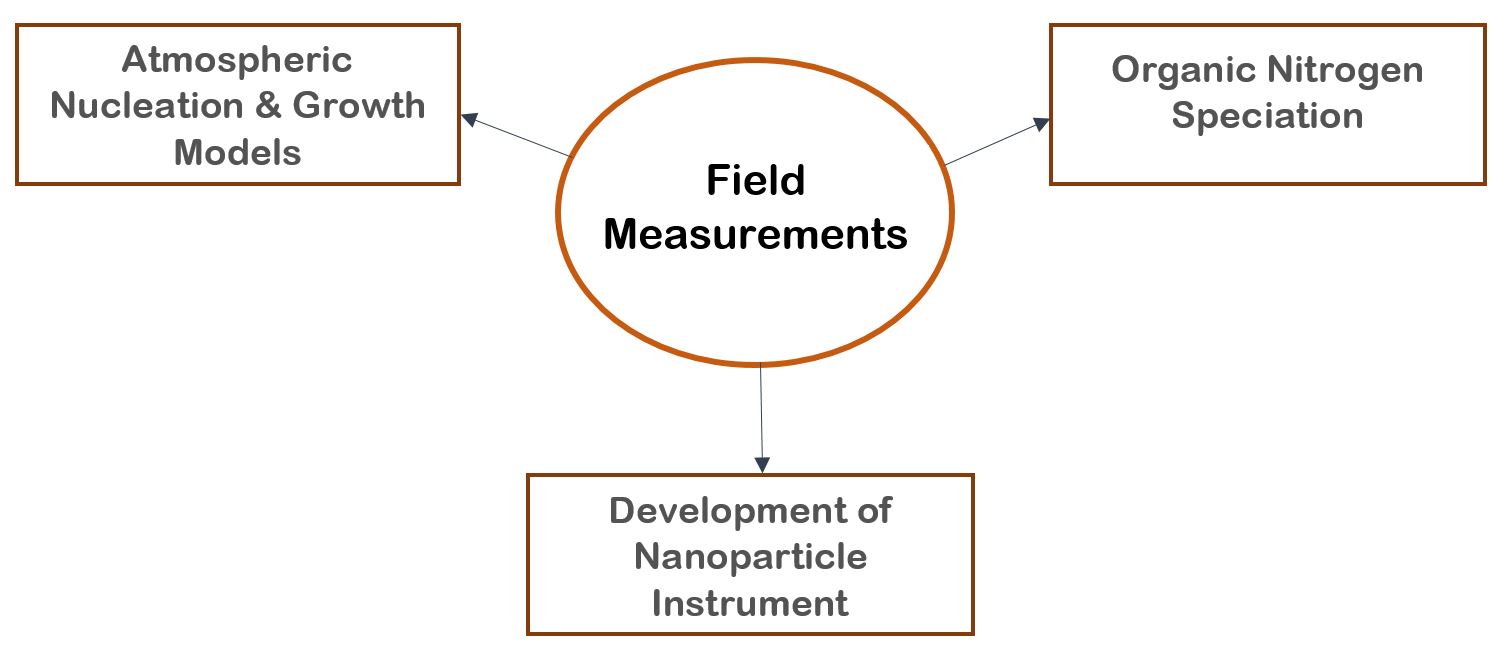Research Summary
The Jen Research Lab focuses on developing a holistic approach towards a fundamental understanding of atmospheric nanoparticle interactions. We specialize in exploring microphysics and kinetic theory pertaining to the physio-chemical and reactive transport phenomena in atmospheric aerosol reactions. We examine the life cycle of aerosol particles in the atmosphere and how these particles ultimately affect air quality and the environment. We also research how gaseous compounds emitted from various sources react to form and grow aerosol particles in the atmosphere. Through the study of particle growth pathways, we develop models for aerosol particles in the atmosphere, and specialize in the design of nanoparticle sizers, counters, and chemical speciators.
A new research direction for our group is characterizing atmospheric organic nitrogen. Increased organic nitrogen in aerosol particles and their subsequent deposition into the environment perturbs the nitrogen cycle and has been previously linked to ocean acidification, forest decline, and increase in vector-born human illness. Hence, we strive to understand the sources and subsequent atmospheric reactions that lead to high particulate organic nitrogen concentrations in the atmosphere and examine how this organic nitrogen impacts human health and the environment.
Development of Nanoparticle Instrumentation
Freshly nucleated atmospheric aerosol particles are ~1 nm in diameter, consist of several molecules clustered together and exist in parts per quadrillion level concentrations. The Jen group is developing new instrumentation to measure the chemical composition and concentration of these nanoparticles in the atmosphere. These instruments include chemical ionization mass spectrometers and high-resolution particle sizers/counters.
Chemical Reactions behind Atmospheric Nucleation and Growth
Prof. Jen has conducted field measurements to determine which compounds are responsible for atmospheric nucleation, the process that produces the majority of seed particles for cloud formation. She has studied how sulfuric acid, the product from SO2 emissions, and amines react to form and grow particles. She has equally developed a heuristic model to predict nucleation rates that can be generalized to more complex mixtures such as the atmosphere. The Jen lab continues to study atmospheric nucleation and growth rates for other relevant compounds such as organic nitrogen.
Organic Nitrogen Speciation
Biological processes, like decomposition of proteins, emit organic nitrogen compounds (e.g., amines and amides). These compounds have previously been shown to adversely affect human health and the environment. Prof. Jen’s research has shown that these compounds are prevalent in the atmosphere at concentrations high enough to not only participate in nucleation but also other aerosol chemistry. The Jen lab is now working to develop the tools to speciate organic nitrogen compounds in aerosols and map out their chemical reactions in the atmosphere.
